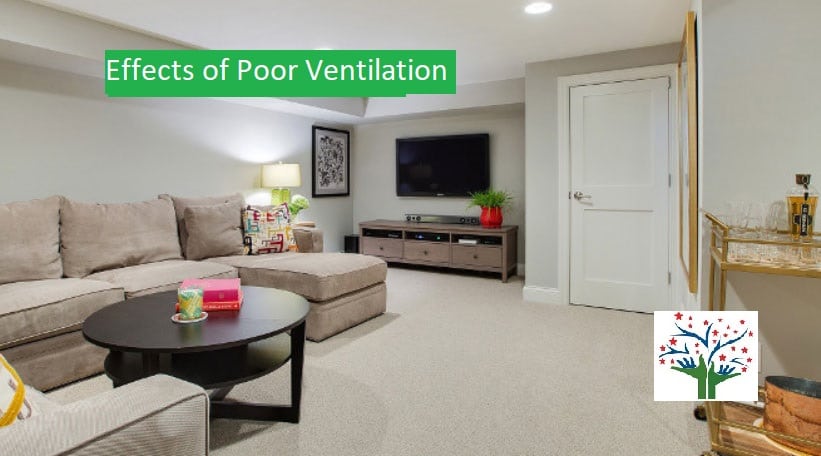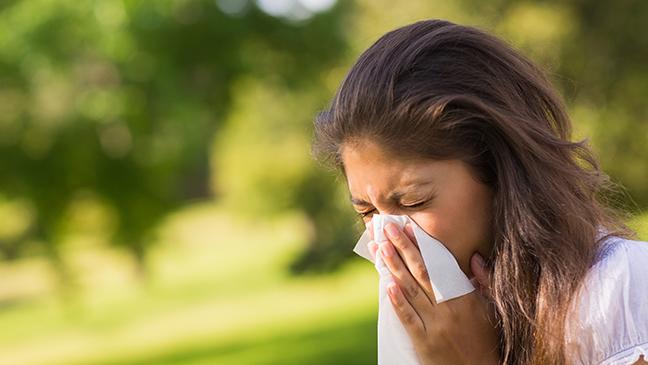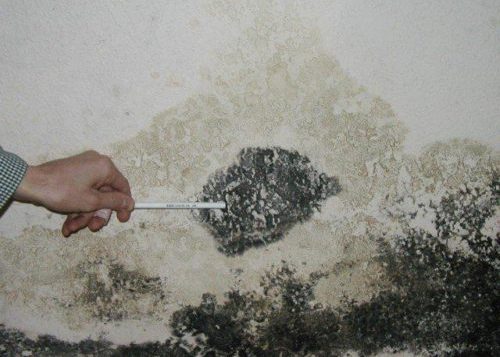Effects of Poor Ventilation
Effects of Poor ventilation can lead to a buildup of indoor air pollutants, triggering respiratory problems and allergies. Additionally, it hampers cognitive function, as increased carbon dioxide levels affect concentration and decision-making. Overall, inadequate ventilation diminishes both physical health and mental well-being.

What is Ventilation?
Ventilation, often overlooked and underappreciated, is an essential aspect of indoor spaces that significantly impacts human health, comfort, and overall well-being. Proper ventilation ensures a continuous flow of fresh air while expelling pollutants, odors, and excess moisture. Conversely, poor ventilation can lead to a myriad of adverse effects that affect both individuals and the environment. In this comprehensive article, we will delve into the multifaceted consequences of inadequate ventilation, shedding light on the hidden dangers that demand our attention and action.
Ventilation is the process of replacing stale, indoor air with fresh outdoor air. It serves several essential purposes, including maintaining indoor air quality, regulating temperature and humidity, and preventing the buildup of harmful pollutants. Inadequate ventilation leads to a host of problems that affect inhabitants in various ways.
Read more About Importance of Ventilation
Causes of Poor Ventilation
Poor ventilation can stem from various factors that impede the proper flow of fresh air. Blocked or obstructed air vents can restrict the movement of air, preventing effective circulation. Inadequate design considerations, such as insufficient placement of windows and air passages, can hinder the natural movement of air throughout a space.
Closed windows and a lack of exhaust systems prevent the expulsion of stale air and pollutants, contributing to an unhealthy indoor environment. Additionally, neglecting regular maintenance of ventilation systems can lead to clogged filters and reduced efficiency, exacerbating ventilation problems.
Health Implications of Poor Ventilation
Respiratory Issues
One of the most prominent consequences of poor ventilation is compromised indoor air quality. As pollutants accumulate and become trapped in enclosed spaces, occupants are exposed to a cocktail of harmful particles, including dust, pollen, mold spores, pet dander, and volatile organic compounds (VOCs). Prolonged exposure to these airborne contaminants can trigger or exacerbate respiratory problems, such as asthma, allergies, bronchitis, and chronic obstructive pulmonary disease (COPD).
Allergies and Sensitivities
Inadequate ventilation can also exacerbate allergies and sensitivities to environmental triggers. Individuals with allergies may experience heightened symptoms due to increased exposure to allergens in poorly ventilated spaces.

Infectious Diseases
Stagnant air provides an ideal environment for the transmission of airborne diseases, such as influenza, tuberculosis, and COVID-19. Proper ventilation plays a critical role in diluting and dispersing infectious particles, reducing the risk of disease transmission in indoor settings.
Learn more about Ventilation Survey Technique
Sick Building Syndrome (SBS)
The Enigma of SBS
Sick Building Syndrome is a perplexing phenomenon characterized by a range of nonspecific health complaints experienced by occupants of a particular building. These complaints are often linked to time spent in the building but have no identifiable cause. Symptoms of SBS may include headaches, fatigue, dizziness, nausea, and respiratory discomfort. Poor ventilation, coupled with inadequate indoor air quality, is a leading contributor to the prevalence of SBS in modern buildings.
Building-Related Illnesses (BRI)
In severe cases, prolonged exposure to poor ventilation and indoor pollutants may lead to Building-Related Illnesses (BRI). These illnesses are directly attributed to specific environmental conditions within the building and can have debilitating effects on affected individuals.
Mental and Cognitive Effects of Poor Ventilation
Cognitive Impairment
Indoor air quality and ventilation are closely linked to cognitive function. Studies have shown that high levels of CO2, which can accumulate in poorly ventilated spaces, negatively impact cognitive abilities, memory, and decision-making skills.
Mood and Well-being
Occupants of poorly ventilated buildings often report feelings of discomfort, irritability, and reduced overall well-being. Adequate ventilation can help improve mood, create a positive environment, and foster better mental health.
Sleep Disturbances
Inadequate ventilation can disrupt sleep by creating uncomfortable sleeping conditions. Poor air quality and high temperatures can lead to restless nights and decreased sleep quality.
Discomfort and Stress
Stuffy, poorly ventilated spaces often cause discomfort, contributing to stress and reduced overall satisfaction. People in such environments tend to feel fatigued, irritable, and less motivated.
Read more about Ventilation Testing Services
Impact on Building Integrity by Poor Ventilation
Condensation and Mold Growth
Inadequate ventilation can lead to excess humidity and condensation on surfaces, such as windows, walls, and ceilings. Prolonged exposure to high humidity can promote mold growth, leading to unsightly patches, structural damage, and health hazards.

Building Deterioration
Poor ventilation can accelerate the deterioration of building materials, such as wood, drywall, and insulation. Rot, decay, and corrosion compromise the structural integrity of the building, necessitating costly repairs and renovations.
Energy Efficiency and Environmental Impact
Increased Energy Consumption
Buildings with poor ventilation often rely heavily on mechanical heating and cooling systems to compensate for inadequate fresh air circulation. This reliance drives up energy consumption, leading to higher utility bills and increased greenhouse gas emissions.
Impact on Climate Change
The energy-intensive practices resulting from poor ventilation contribute to greenhouse gas emissions, exacerbating the global climate crisis.
Final Thoughts on Effects of Poor Ventilation
The effects of poor ventilation extend far beyond stuffy rooms and discomfort. They reach into the very core of our health, well-being, and environmental sustainability. Recognizing the profound consequences of inadequate ventilation is the first step towards promoting healthier indoor spaces.
To address these challenges, building owners, architects, and occupants must prioritize proper ventilation design, regular maintenance of HVAC systems, and the integration of sustainable building practices. Improved ventilation not only ensures cleaner air and a healthier living environment but also positively impacts our productivity, cognitive abilities, and overall quality of life. Embracing the importance of ventilation is an essential stride towards creating healthier, safer, and more sustainable indoor spaces for generations to come.
1) Health Risks: Poor ventilation can lead to the buildup of indoor pollutants, including allergens, VOCs, and mold spores, which can trigger or worsen respiratory issues such as asthma and allergies, and even lead to long-term health problems.
2) CO2 Accumulation: Inadequate fresh air intake can result in elevated carbon dioxide (CO2) levels, leading to drowsiness, reduced cognitive function, and impaired decision-making, which can be particularly concerning in enclosed spaces like classrooms and offices.
3) Moisture and Mold: Insufficient ventilation can cause excess moisture to accumulate, promoting the growth of mold and mildew. Prolonged exposure to mold spores can lead to respiratory problems, allergic reactions, and other health complications.
1) Moisture Damage: Warping, decay, and structural issues due to excess moisture.
2) Mold Growth: Proliferation of mold and mildew, posing health risks.
3) Paint and Finish Issues: Peeling, cracking, and damage to surfaces.
4) Odor Buildup: Accumulation of unpleasant smells.
5) Energy Inefficiency: Higher energy consumption and HVAC strain.
6) Condensation: Water damage and potential mold formation.
7) Indoor Air Quality Decline: Pollutant buildup, unhealthy environment.
8) Fixture Lifespan Shortening: Deterioration of appliances and electronics.
9) System Inefficiency: HVAC and air circulation problems.
10) Tenant Discomfort: Lower comfort, productivity, and satisfaction.
Poor Indoor Air Quality: Accumulation of pollutants, allergens, and volatile organic compounds.
Respiratory Issues: Increased risk of allergies, asthma, and other respiratory problems.
CO2 Buildup: Elevated carbon dioxide levels, causing drowsiness and reduced cognitive function.
Mold Growth: Excess moisture promoting mold and mildew growth.
Temperature Regulation Problems: Inconsistent temperatures and discomfort.
Energy Inefficiency: HVAC system strain and higher energy bills.
Condensation: Water damage, potential structural issues, and mold formation.
Unpleasant Odors: Trapped odors contributing to discomfort.
Reduced Productivity: Cognitive impairment, decreased concentration, and poor decision-making.
Health Risks: Increased exposure to indoor pollutants affecting overall well-being.
Open Windows and Doors: Regularly open windows and doors to allow fresh air circulation.
Use Exhaust Fans: Install exhaust fans in kitchens and bathrooms to remove moisture and odors.
Mechanical Ventilation: Use mechanical ventilation systems, like air purifiers and HRVs (heat recovery ventilators), for controlled air exchange.
Cross-Ventilation: Strategically position windows to create cross-ventilation by allowing air to flow through.
Ventilation Design: Plan building layouts to ensure proper airflow and air circulation.
Use Fans: Use ceiling fans or floor fans to enhance air movement.
Proper Furnishings: Arrange furniture to avoid blocking air pathways.
Reduce Clutter: Declutter spaces to facilitate better airflow.
Natural Ventilation: Utilize natural airflow through design elements like atriums or vented roofs.
Seal Gaps: Seal gaps and cracks in windows, doors, and walls to prevent air leaks.
Plant Indoor Greenery: Indoor plants can contribute to better air quality.
Regular Maintenance: Maintain HVAC systems and clean filters regularly.
Control Humidity: Use dehumidifiers to control excessive moisture levels.
Cook and Shower Smartly: Use exhaust fans while cooking and showering to prevent excess humidity.
Choose Low-VOC Materials: Opt for low-VOC paints, furniture, and products to reduce indoor pollutants.
